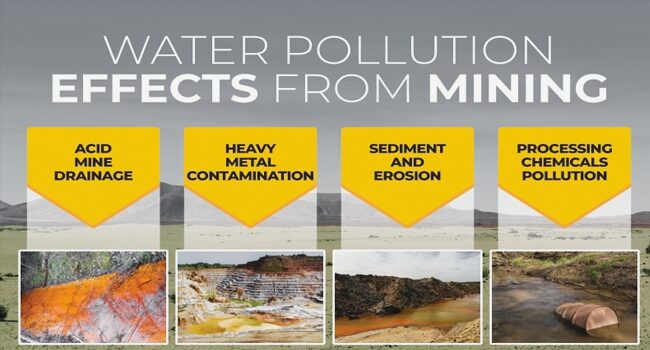Introduction
Gold mining has been a vital part of human civilization for millennia, contributing to the wealth and development of several societies. From ancient times to the contemporary era, gold mining has developed notably, using various techniques to extract gold from the earth. However, this extraction procedure frequently comes with significant environmental impacts. This article explores the gold mining method in detail, the various techniques used, and the ecological results associated with gold mining.
1.The Gold Mining Process
Gold mining involves numerous levels, each vital to the green and powerful extraction of gold. These tiers include exploration, extraction, processing, and reclamation.

Exploration
Exploration is step one in the gold mining manner. It includes finding areas where gold deposits can be determined. Geologists use various techniques to perceive capability gold-bearing websites, which include:
2.Geological Surveys: Examining rock formations and soil compositions.
Geophysical Methods: Using magnetic, gravitational, and seismic surveys to locate gold deposits.
Once an online capacity website is identified, extra targeted exploration is performed, together with drilling and sampling, to determine the scale and niceness of the gold deposit.
Extraction
Extraction is the method of eliminating gold from the earth. There are numerous methods of gold extraction, each suitable for one-of-a-kind types of gold deposits and environmental situations.
Placer Mining: This approach entails extracting gold from alluvial deposits, where gold has been deposited using water action. Techniques encompass panning, sluicing, and dredging. Panning is the simplest approach, involving the manual separation of gold from sediments in a pan. Sluicing uses a sluice box to split gold from sediments using water drift. Dredging includes massive-scale excavation of riverbeds or other water bodies.
Hard Rock Mining: This technique involves extracting gold from solid rock. It requires more complicated techniques and equipment, such as drilling, blasting, and transporting the ore to processing centers. Hard rock mining is used when gold is determined in veins within rock formations.
Heap Leaching: In this technique, low-grade gold ore is piled onto a pad and sprayed with a cyanide solution. The solution percolates through the ore, dissolving the gold, which is then amassed at the base of the heap. This method is price-effective for low-grade ores, but it has enormous environmental dangers.
It is appropriate for big, shallow deposits. Open-pit mining is extraordinarily mechanized, involving the use of massive machinery to move materials.
Underground Mining: When gold deposits are placed deep underground, this method involves growing tunnels or shafts to attain the ore. It is more expensive and complex than floor mining; however, it is vital for deep deposits.
3.Processing
After extraction, the gold ore undergoes processing to separate the gold from different substances. This includes several steps:
Crushing and Grinding: The ore is beaten into smaller pieces, after which it is ground into an exceptional powder to liberate the gold debris.
Concentration: The floor ore is subjected to numerous awareness techniques to boost the gold content. Gravity separation, flotation, and magnetic separation are commonplace attention techniques.
Amalgamation: In a few small-scale operations, mercury is used to amalgamate with gold, forming an alloy. The mercury is then vaporized to depart in the back of 24-karat gold. This approach is hazardous because of mercury’s toxicity.
Cyanidation: This is the most widely used method for extracting gold from ore. The ore is handled with a cyanide solution that dissolves the gold. The gold-weighted-down solution is then processed to recover the gold.
Electrowinning: The gold-encumbered solution undergoes electrochemical treatment to recover the gold in strong form. This procedure uses electricity to precipitate gold from the answer.
4.Refining
Refining is the very last degree of the gold mining procedure, wherein impurities are removed to supply 24-karat gold. Methods encompass:
Miller Process: This method involves blowing chlorine gasoline through the molten gold to eliminate impurities. The process is fast but can handiest produce gold with ninety-nine—5% purity.
Wohlwill Process: An extra complicated method that makes use of electrolysis to reap better purity degrees of ninety-nine.Ninety nine%. Gold is dissolved in a hydrochloric acid answer and then electroplated onto cathodes, leaving impurities in the back.
5.Reclamation
Reclamation is the system of restoring the land after mining operations have ceased. It includes:
Land Rehabilitation:Recontouring the land to its natural nation, planting vegetation, and ensuring soil stability.
Water Treatment: Treating contaminated water to dispose of dangerous chemicals and restore water first-rate.
Waste Management: Safely eliminate or treat mining waste to save you from environmental infection.
6.Environmental Impact of Gold Mining
While gold mining can convey economic advantages, it also poses enormous environmental demanding situations. The effect varies depending on the mining method and the volume of operations.
Habitat Destruction
Mining activities regularly destroy habitats. Open-pit and placer mining, particularly, involves the elimination of large areas of land, which contributes to deforestation, a lack of biodiversity, and disruption of ecosystems. Wildlife may be displaced, and plant species may be eliminated.
Water Pollution
Gold mining can lead to excessive water pollutants. The extraction technique of chemical compounds like cyanide and mercury can contaminate water bodies. Cyanide spills and mercury runoff can have devastating consequences on aquatic lifestyles and human fitness. Acid mine drainage, because of the exposure of sulfide minerals to air and water, can cause tremendously acidic water, which is harmful to the surroundings.
Soil Erosion and Sedimentation
Mining activities regularly disturb huge regions of land, which contributes to soil erosion. The elimination of vegetation and topsoil makes the land liable to erosion by wind and water. Sediments from mining sites can wash into rivers and streams, inflicting siltation and harming aquatic habitats.
Air Pollution
The mining technique can generate sizeable amounts of dirt and emissions from equipment. Blasting and drilling launch particulate matter depends on the air, contributing to air pollutants. Additionally, the usage of diesel-powered equipment emits greenhouse gases, contributing to climate trade.
Mercury Contamination
Mercury is frequently used to amalgamate gold in small-scale and artisanal gold mining. This method releases mercury vapor into the air and contaminates water and soil. Mercury is an amazing neurotoxin that poses extreme health dangers to miners and surrounding communities.
Energy Consumption
Gold mining is a strength in depth, especially in difficult rock mining and ore processing. The extraction, processing, and refining processes require enormous amounts of power, contributing to carbon emissions and weather trade.
Mitigating Environmental Impact
Given the great environmental impacts of gold mining, it is crucial to undertake sustainable practices and technology to minimize damage. Several processes can help mitigate the environmental impact of gold mining.
7.Sustainable Mining Practices
Recycling and Reusing Materials: Recycling mining waste and reusing materials can lessen mining operations’ environmental footprint. This includes reprocessing antique tailings and recycling water used in mining.
Energy Efficiency: Implementing power-efficient technologies and practices can reduce power intake and greenhouse fuel emissions. These include using renewable energy resources, optimizing system performance, and enhancing procedure controls.
Responsible Chemical Use: Reducing or avoiding the use of dangerous chemical substances like mercury and cyanide can mitigate their impact on the environment. Alternative extraction techniques, such as gravity separation and bioleaching, can be explored.
Mine Closure Planning: Developing comprehensive mine closure plans guarantees that land reclamation and rehabilitation are correctly done. This includes lengthy-term monitoring and renovation of reclaimed sites.
8.Regulatory Frameworks
Governments and regulatory bodies play an essential role in implementing environmental standards and rules for the mining enterprise. Strict regulations and normal inspections can ensure that mining organizations adhere to good practices and limit ecological harm.
Environmental Impact Assessments (EIAs): Thorough EIAs conducted before starting mining operations can identify potential environmental risks and describe mitigation measures.
Permitting and Compliance: Requiring mining corporations to attain permits and observe environmental regulations ensures that mining activities are performed responsibly. Non-compliance must result in consequences and corrective actions.
9.Community Engagement
Engaging with local groups and stakeholders is vital for sustainable mining. Mining organizations must involve communities in selection-making tactics, cope with their concerns, and ensure that they gain from mining sports.
Benefit-Sharing Agreements: Establishing agreements with nearby groups to share the economic advantages of mining can promote social and environmental responsibility.
Corporate Social Responsibility (CSR): Mining businesses should undertake CSR practices that prioritize environmental stewardship, community development, and sustainable practices.
10.Technological Innovations
Advancements in generation can extensively reduce the environmental effects of gold mining. Innovations include:
Bioremediation: Using microorganisms to detoxify infected water and soil can effectively mitigate pollutants from mining activities.
Remote Sensing and Monitoring: Satellite imagery, drones, and remote sensing technologies can monitor mining websites in real-time, determining environmental adjustments and ensuring compliance with rules.
Eco-Friendly Extraction Methods: Developing and implementing alternative extraction strategies that don’t rely on harmful chemical substances can reduce the environmental footprint of gold mining.
Conclusion
Gold mining, while an important industry with considerable financial advantages, poses great environmental challenges. Understanding the various stages of the gold mining system and their related effects is important for developing sustainable practices. By adopting responsible mining practices, imposing regulatory frameworks, attracting communities, and leveraging technological innovations, the gold mining industry can mitigate its environmental effects and contribute to sustainable improvement. As we continue to call for gold for its economic and cultural fee, we must attempt to stabilize this call with environmental stewardship and duty.
FAQs
1. What are the number one stages of the gold mining manner?
Answer: The primary degrees of the gold mining manner encompass exploration, extraction, processing, refining, and reclamation. Exploration entails finding ability gold deposits. Extraction methods encompass placer mining, difficult rock mining, heap leaching, open-pit mining, and underground mining. Processing includes crushing, grinding, and various concentration methods to separate gold from different materials. Refining removes impurities to produce pure gold. Reclamation restores the land after mining operations stop.
2. How does gold act as a hedge against inflation?
Answer: Gold acts as a hedge against inflation because its value tends to boom while the buying power of fiat currencies decreases. During periods of high inflation, gold expenses frequently rise, retaining the investor’s wealth.
3. What are the distinct strategies of extracting gold?
Answer: Special strategies for extracting gold include placer mining, hard rock mining, heap leaching, open-pit mining, and underground mining. Each method is suitable for specific kinds of gold deposits and environmental situations.
4. What are the environmental impacts of gold mining?
Answer: Gold mining has environmental effects, including habitat destruction, water pollution, soil erosion and sedimentation, air pollutants, mercury contamination, and high power intake. These impacts can lead to loss of biodiversity, contamination of water bodies, and multiplied greenhouse gas emissions.
5. How does cyanidation work in gold extraction, and what are its risks?
Answer: Cyanidation is a method wherein gold ore is dealt with with a cyanide answer that dissolves the gold. The gold-encumbered solution is then processed to recover the gold. The dangers include the potential for cyanide spills, which can contaminate water bodies and damage aquatic lifestyles and human health.
6. What is the cause of the reclamation stage in gold mining?
Answer: The purpose of the reclamation stage in gold mining is to restore the land after mining operations have ceased. This involves land rehabilitation, water treatment, and waste management to mitigate environmental damage and make sure the web page is secure and strong for destiny use.
7. How can the environmental effect of gold mining be mitigated?
Answer: The environmental impact of gold mining may be mitigated by adopting sustainable mining practices, which include recycling and reusing materials, implementing strong green technologies, decreasing dangerous chemical use, and developing comprehensive mine closure plans. Regulatory frameworks and network engagement are also important.
8. What role do regulatory frameworks play in gold mining?
Answer: Regulatory frameworks ensure that mining organizations adhere to environmental requirements and rules. This includes accomplishing environmental impact checks, acquiring important permits, and complying with environmental laws. Strict enforcement and ordinary inspections help minimize ecological harm and promote sustainable practices.
9. What technological innovations are assisting in reducing the environmental effect of gold mining?
Answer: Technological innovations that help reduce the environmental impact of gold mining encompass bioremediation, which uses microorganisms to detoxify contaminated sites; far-off sensing and tracking technologies, such as satellite imagery and drones; and eco-friendly extraction methods that don’t rely upon harmful chemical compounds.
10. How does community engagement make contributions to sustainable gold mining?
Answer: Community engagement entails concerning local groups and stakeholders in choice-making techniques, addressing their issues, and ensuring they benefit from mining activities. This can consist of setting up advantage-sharing agreements and adopting corporate social responsibility practices that prioritize environmental stewardship and network improvement.


